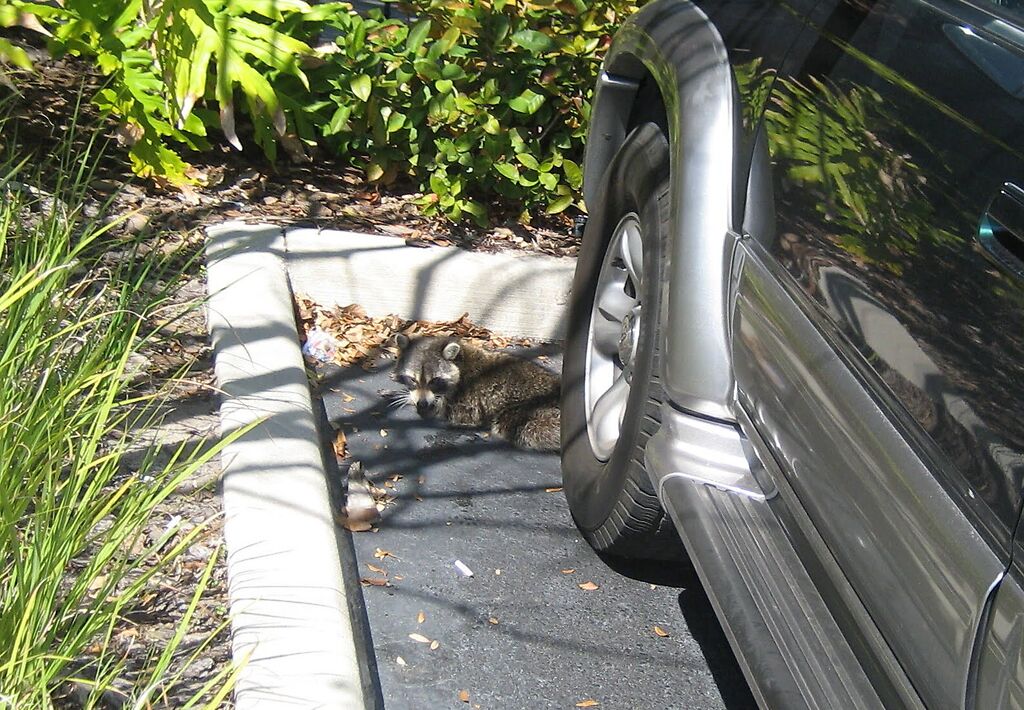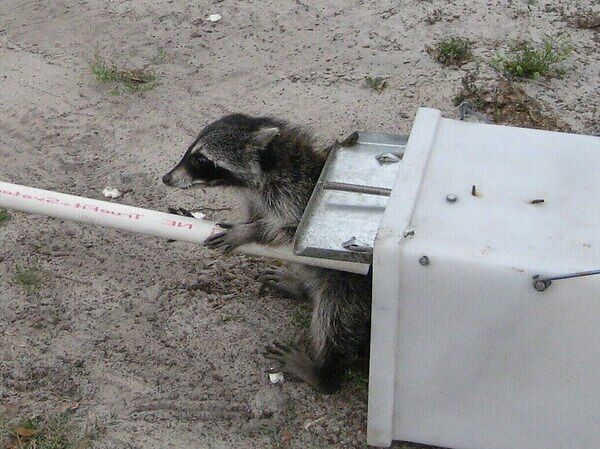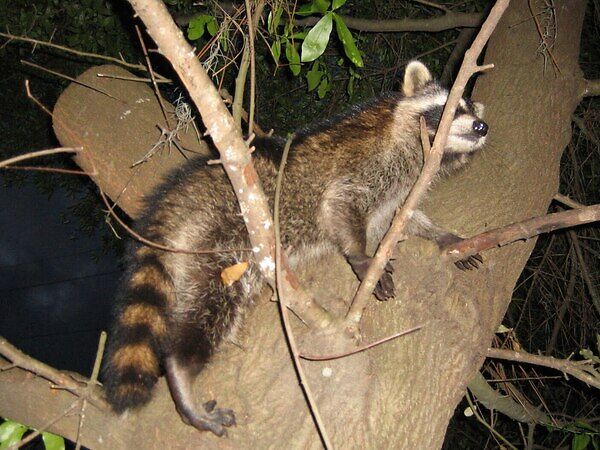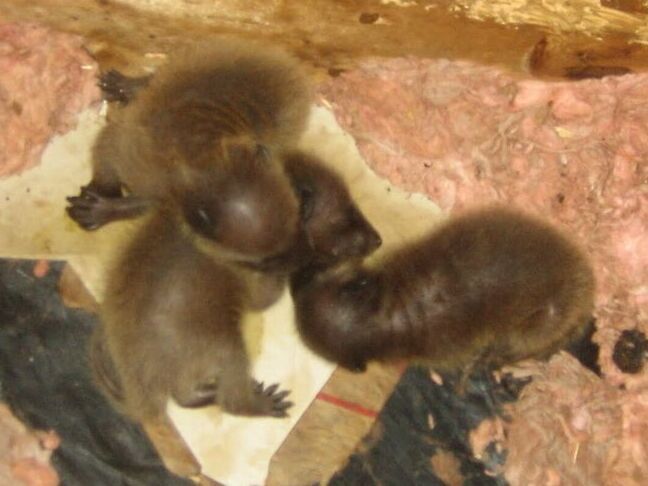Although the natural habitat of the raccoon is the forest, raccoons, like many animals, have become quite adaptable to varied habitats. As a result, it is not unusual for them to enter urban areas populated by humans. Gardens are enticing to raccoons, as are trash bins. Most often, they will forage for food in populated areas, and then retreat to a nearby forest area to sleep. However, a raccoon may enter the crawl space or the attic of a home, or one might take up residence in a garage or outbuilding. In some cases, a group of several raccoons may seek shelter in a dwelling.
A Raccoon’s Diet
Raccoons are omnivores, so they eat both plants and meat. A raccoon’s diet typically consists of various plants, berries, vegetables, fish, insects, and small mammals, such as mice. However, if a raccoon ventures into populated areas, it will eat most anything it finds. Vegetable and even flower gardens are enticing to raccoons. Pet food left out will also keep a raccoon coming around. Most often, however, it is human garbage that will keep a raccoon returning to a particular area. Raccoons are driven by their instinct to eat, and they can be very clever in finding ways to access food in populated areas.
Cohabitation
It was formerly believed that raccoons, with the exception of mothers with their kits, were solitary animals, preferring to forage and live alone. However, recent studies have determined that they do sometimes travel and forage together and live in groups. It is most common for related females to live together, or for non-related males to cohabitate. Males and females do not reside together, and while female kits will often live with or near their mother once old enough to live on their own, male offspring will usually travel some distance away; this is thought to be instinctual so as to avoid interbreeding among related males and females.
Raccoon Mating Season
Mating season occurs in the late spring in most areas of the US, and if a single or group of pregnant females makes a den in your attic or outbuilding, it will be a while before you will be able to remove them. The offspring will stay with their mother until the fall, as the offspring will be about 16 weeks old before they are able to live on their own. Even if you can prevent the adults from entering your home once they have gone foraging at night for food, it is inhumane to trap the babies inside. At this point the only real action you can take is attempting to trap and remove all animals. This may require you calling a wildlife rehabilitation center to insure the young do not die during the process.
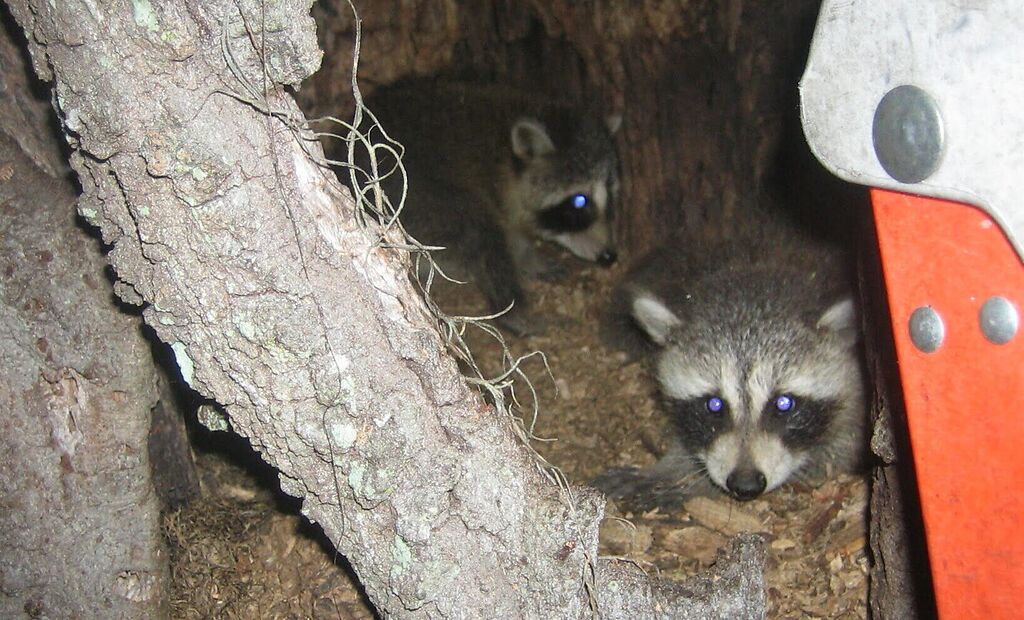
Raccoons In Your Attic
Raccoons typically make their dens in the hollows of old trees or crevices formed by a grouping of rocks. If these aren’t available, raccoons may move into a burrow abandoned by another animal or into a dense patch of undergrowth in the forest. In the winter in particular, if a suitable home is not found for a den, raccoons may be more likely to seek shelter in human dwellings. Once the raccoons have moved in, they can cause a lot of damage to a dwelling, and it is hard to remove them. Prevention is the best method for controlling raccoons in populated areas, and there are numerous things you can do to prevent raccoons from making a home in your attic, crawl space, or outbuilding. A combination of humane raccoon deterrents will prove most effective in preventing raccoons from becoming comfortable around your home.
Raccoon Proofing Your Roof
You will also need to focus on raccoon proofing your home to prevent them from entering. Since raccoons often make their homes in trees, they are quite capable of climbing a tree. A tree that is near your roof could cause you raccoon problems. You should cut back any tree branches that would give a raccoon access to your roof. If they can get to your roof, they may be able to find a way into your attic to take up residence.
Sealing Your Attic From Raccoons
You also need to seal your roof and attic from raccoons. If you have a chimney, make sure it has a cap or wire mesh over it so that a raccoon cannot climb down and enter the attic or come out through a fireplace. A raccoon can enter through an opening as small as four inches, so carefully check your roof for access points for a raccoon. Any attic or roof vents that are wide enough to allow access to a raccoon should also be covered with wire mesh to prevent a raccoon from getting in. Check attic windows and replace any broken glass that might allow a raccoon to get in. You should also check roof tiles or shingles to make sure that they are in good condition. Replace damaged ones and seal off any gaps that a raccoon could get through.
Raccoon Deterrent Tips
Once raccoons have decided that your home will offer them plenty of opportunities for feeding, they could become aggressive in their determination to make a home in your attic. Once they are in, removing them is difficult. For this reason, you should focus on making your home less inviting to a raccoon by removing possible food sources so that they will go elsewhere to look for food. Raccoons are notorious for knocking over garbage cans to access the trash. Make sure your garbage cans are heavy enough that raccoons can’t easily knock them over, and be sure they have tight fitting lids or lids with latches that prevent easy access to the garbage inside.
Avoid leaving pet food out all day or overnight, as this is another easy opportunity for raccoons to get food, which will make them want to hang around. After feeding your pet, remove leftover food until the next feeding time. If you have fruit trees, pick up any fruit that falls to the ground immediately. The scent of rotting fruit is enticing to a raccoon, and it will stick around to get as much of the fruit as possible. The same applies for nuts that have fallen from trees; remove them so there is no food source readily available for raccoons to eat.
